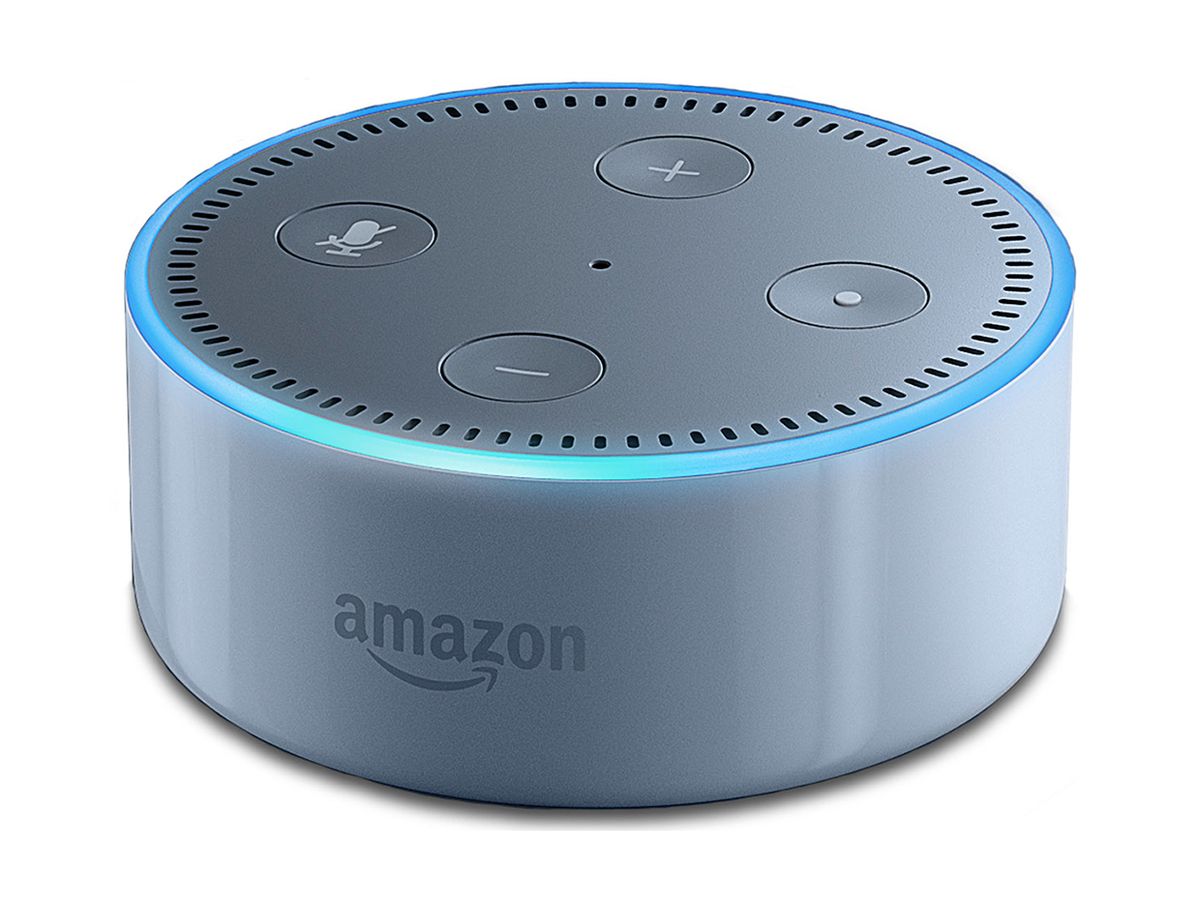The Consumer Electronics Hall of Fame: Amazon Echo Dot
By brilliantly combining a few existing technologies, Amazon created a whole new category of appliance

There have been products that have established a new product category—there was nothing like the phonograph before Thomas Edison invented it. There have been products that were vast improvements within an existing category—Sony’s Trinitron represented a huge technological leap in color-TV technology. But there aren’t many precedents for what Amazon did with its Echo product line. It hijacked an existing product category—smart speakers—and helped turn it into something else: a gateway to the Internet of Things, pointing the way toward a truly “smart” home.
In the 2000s, Logitech and Sonos were among the companies that created the market for smart speakers for home use. The option to connect via Bluetooth led to a new kind of smart speaker, a lightweight, standalone speaker that could be used in the home but was more typically paired with a mobile phone and used to play music or podcasts on the go. Some of the leading makers of such Bluetooth smart speakers are Bose, JBL, and UE.

Amazon’s transformation of the smart-speaker market was a two-step process. It took the first step in 2014 with its first Echo, designed to look like a run-of-the-mill entry in the smart-speaker category. None of the individual features of that Echo were new. What set it apart was the way it seamlessly combined them.
This first Echo had a speaker with audio performance comparable to that of other high-quality smart speakers. But unlike those speakers, it connected through Wi-Fi to the Internet, and through the Internet to the cloud. It also came with a voice-activated digital assistant, called Alexa. Before that first Echo, the “smart” in “smart speakers” meant that the speaker in question could, via Bluetooth, be connected wirelessly and controlled by a remote device.
Voice assistants were nothing new, either. But the combination of Alexa with Echo was subtly different from other devices with voice-activated assistants. Apple’s Siri (introduced in 2011) and Google Now (a 2012 precursor of Google Assistant) were typically accessed through mobile devices—smartphones and tablets. Users invoked them when they had those devices in hand, or close-at-hand: “Siri, where is the nearest Chinese restaurant?” Siri and Google Now were part of the mobile experience, and, crucially, not the home experience.
The second step in Amazon’s transformation of the smart-speaker category was the introduction of the Echo Dot, in 2016. It demonstrated that the voice-activated assistant, Alexa, wasn’t merely a supplemental feature, it was the point of the product line. The Echo Dot is minimally functional as a speaker (in fact, it has a port into which a better-quality speaker can be plugged).
As an electronic device, it is mostly unremarkable. In a package like an oversize ice-hockey puck, it integrates a Texas Instruments Digital Media Processor (the DM3725), SDRAM from Micron Technology, a 4-GB flash memory from Samsung, and a Wi-Fi/Bluetooth chip from Qualcomm. TI also supplied the power-management chip and DAC (digital-to-analog converter). As an object, it is unobtrusive and well designed, with a light that glows pleasantly around the circumference of the top surface.
Like the original smart speakers, the Echo Dot was built to mostly stay put in a room. It is neither carried nor picked up; users talk to it from a distance, for example across a room.
The incorporation of a group of features already found in different combinations in previous products might seem like a weak distinction. But by combining them in the Echo Dot, Amazon arrived at something new: an exclusively hands-free home-based device that lets people perform useful tasks and access a growing universe of services, including buying stuff online. From Amazon.
If there were any question the Echo Dot was its own separate thing, it was laid to rest when Google and Apple both decided they needed something to take on Echo Dot, which resulted in Google’s Home and Apple’s HomePod product lines. Lacking a tidy way to describe the category they define, all three (and the increasing number of similar products) are still typically lumped into the “smart speaker” category. They’re distinctly different, however, because they truly are smart, the embodiments of evolving, network-based artificial intelligences such as Alexa, Google Assistant, and Siri.
In recent years, the bits of information that come out of major companies are rare and sporadic, like the photons emitted by black holes. Sales and engineering figures are hard to come by from corporate behemoths like Amazon. Early in 2019, an Amazon executive said 100 million “Alexa-enabled” devices had been sold, one of the few (if not only) sales-related numbers ever released about Echo products.
Note that phrase, “Alexa-enabled.” That of course includes Echo products, but Alexa is also resident on a range of other products from other manufacturers, including Facebook’s Portal and Portal+, Harman Kardon’s Allure, Bose’s Home Speaker, and others. Meanwhile, JBL, Klipsch, and others have speakers with Google Assistant built in. The growth of the smart-speaker category pioneered by the Echo Dot continues. While it is unclear what “100 million Alexa-enabled devices” precisely means for Echo sales, it strongly suggests that Echoes are the best-selling smart speakers by far.
Today, people routinely use smart speakers to access information, listen to music, purchase goods, summon a taxi, among literally thousands of such activities. As more and more homes add automated, networked systems such as baby monitors, door locks and home-security systems, heating and cooling, smart lighting systems, multiroom audio setups, and so on, network-based virtual assistants will be used to control it all. The Echo Dot, with Alexa, was the first to blaze that trail.


